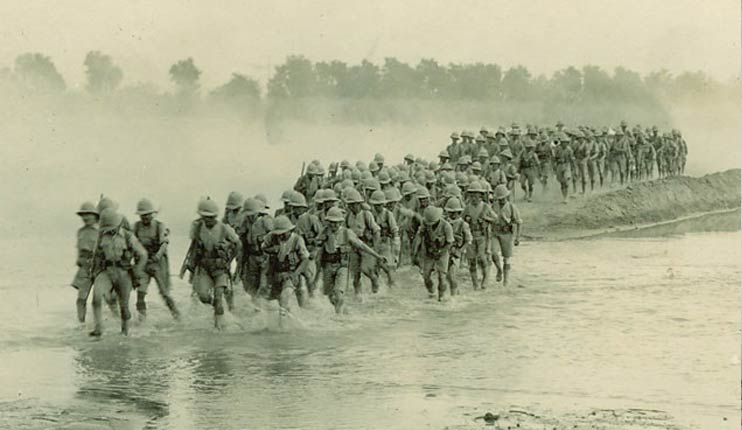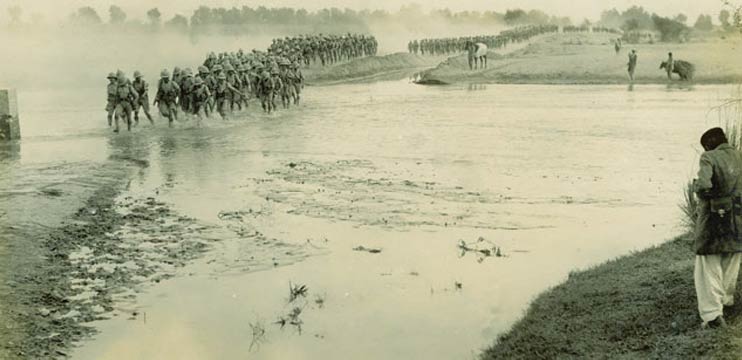This photograph from the Museum archives shows members of the 1st Battalion, The King’s Royal Rifle Corps, crossing the Kuram River on 1 December 1926 during a 262-mile march from Rawalpindi to Razmak on the North-West Frontier of India (now Pakistan).

1st Battalion, The King’s Royal Rifle Corps, crossing the Kuram River
Background
The 1st Battalion, The King’s Royal Rifle Corps, moved from Ireland to India in 1922 and, after three years stationed at Rawalpindi, was ordered to the Razmak district of North Waziristan on the North-West Frontier bordering Afghanistan.
At 8.20 a.m. on 16 November 1926, on a brilliantly fine morning, 14 officers and 618 other ranks, under the command of Lieutenant-Colonel F.G. Willan CMG DSO, marched out of their barracks in Rawalpindi en route to Razmak. Two officers and 80 other ranks accompanied the heavy baggage which was despatched by train.
It took the Battalion 22 days to complete the 262-mile march, arriving at Razmak in a snowstorm on 8 December. The average distance marched each day was 14 miles with three rest days.
The greatest distance marched in a single day was 20 miles on 1 December. On this day the Battalion waded ankle-deep across the Kuram River, as shown in the photograph.
Setting an example to his men, the Commanding Officer marched the whole distance on foot stating that he was afraid that he might get stiff if he rode on his horse.
On completion of each day’s march, the officers spent many hours shooting game with mixed results, rarely bagging more than a few chikor, grey partridges or duck.
The Battalion spent a year at Razmak seeking to prevent the notoriously blood-thirsty Mahsuds and Wazirs from fighting.
Razmak itself lies on a plateau 6,600 feet above sea level. The surrounding area is extremely rugged and mountainous. A British garrison was established at Razmak in 1922 to police the area, with battalions spending a year there at a time on what was effectively ‘active service’.
In November 1927 the Battalion left Razmak and went to Lucknow. Commenting on their tour of duty at Razmak, the Battalion’s brigade commander wrote:
The training and tactical efficiency of the Battalion is of a very high standard, due to the excellent supervision and instruction of an able commanding officer, backed by a keen and capable team of officers. The N.C.O.’s are well trained and know their jobs, with the result that the training of smaller formations is good. The men are fit and keen and move extremely well on the hillside. The efficiency of the Battalion in mountain warfare is excellent.

